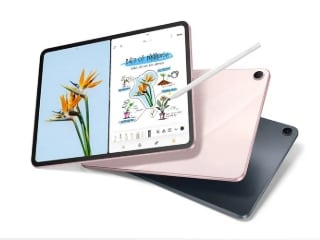- Home
- Mobiles
- Mobiles News
- Windows Phone Market Share Falls to Just 0.1 Percent During Q1 2017: IDC
Windows Phone Market Share Falls to Just 0.1 Percent During Q1 2017: IDC

Photo Credit: IDC
Microsoft recently ended support for Windows Phone 8.1 and it seems like the share of the operating system as a whole has now gone down considerably as well, giving room for Android and iOS to further dominate the market. As per the latest IDC reports for Smartphone OS Market Share and Smartphone Vendor Market Share in Q1 2017, the share of Windows Phone in the smartphone market has dropped down to just 0.1 percent in the first quarter of 2017.
The IDC reports note that smartphone vendors shipped a total of 344.3 million smartphone units worldwide in Q1 2017, up by 3.4 percent year-on-year for the same time period. Windows Phone's share in the market declined 0.3 percent year-on-year during the first quarter, according to the data shared by IDC. "Windows Phone shipments continue to fall as the lack of new hardware partners, developer support, and overall enthusiasm for the platform show no immediate signs of recovery," IDC said in its report.
Android grew 1.5 percent year-on-year to 85 percent during Q1 2017, according to the data. In its report IDC highlighted that Android's market share is less of a talking point than the micro-trends that are going on within the platform. "Despite a slew of very attractive high-end Android products, IDC continues to see Android average selling prices (ASPs) decline and expectations are that the 1.5 billion Android phones that ship in 2021 will have a collective ASP of $198, down from $220 in 2017Q1," it said.
On the other hand, the share of iOS came down 0.7 percent year-on-year to 14.7 percent during Q1 this year. IDC says that it expects 2017 volumes for iOS to grow 3.8 percent and mentions that Apple is expected to have a "strong late 2017" as "next round of iPhones is not likely to disappoint."
Moving to specific companies, a separate report by IDC suggests that Samsung was the market leader in terms of smartphone shipments during Q1 2017 with 23.8 percent of overall smartphone shipments coming from the company.
![]()
Photo Credit: IDC
"Samsung regained control as the leader in the worldwide smartphone market despite a flat first quarter (0% year over year growth). Substantial discounts on the Galaxy S7 and S7 edge helped move last year's flagships as they make way for the new S8 and S8+," ID said in its report. Apart from the flagships, IDC says that the J-Series and A-Series smartphones "drove significant volumes in both emerging and developed markets" due to their flagship-like design at affordable price points.
Interestingly, the smartphone shipments from Apple fell to 50.7 million units in the first quarter this year, compared with 51.2 million units in Q1 last year. Notably, the shipments from Huawei grew to 34.4 million units from 28.1 million units in the same period last year. "Huawei once again demonstrated its stable position in the premium market with the P and Mate Series, and a strong presence in the affordable sector with its Y Series and Honor brand."
While Oppo R9s was regarded as a crucial model for the company's growth in China during the quarter, Vivo's efforts in marketing by sponsoring IPL also found its mention in the report.
Get your daily dose of tech news, reviews, and insights, in under 80 characters on Gadgets 360 Turbo. Connect with fellow tech lovers on our Forum. Follow us on X, Facebook, WhatsApp, Threads and Google News for instant updates. Catch all the action on our YouTube channel.
- Samsung Galaxy Unpacked 2025
- ChatGPT
- Redmi Note 14 Pro+
- iPhone 16
- Apple Vision Pro
- Oneplus 12
- OnePlus Nord CE 3 Lite 5G
- iPhone 13
- Xiaomi 14 Pro
- Oppo Find N3
- Tecno Spark Go (2023)
- Realme V30
- Best Phones Under 25000
- Samsung Galaxy S24 Series
- Cryptocurrency
- iQoo 12
- Samsung Galaxy S24 Ultra
- Giottus
- Samsung Galaxy Z Flip 5
- Apple 'Scary Fast'
- Housefull 5
- GoPro Hero 12 Black Review
- Invincible Season 2
- JioGlass
- HD Ready TV
- Laptop Under 50000
- Smartwatch Under 10000
- Latest Mobile Phones
- Compare Phones
- Honor Win RT
- Honor Win
- Xiaomi 17 Ultra Leica Edition
- Xiaomi 17 Ultra
- Huawei Nova 15
- Huawei Nova 15 Pro
- Huawei Nova 15 Ultra
- OnePlus 15R
- Asus ProArt P16
- MacBook Pro 14-inch (M5, 2025)
- OPPO Pad Air 5
- Huawei MatePad 11.5 (2026)
- Xiaomi Watch 5
- Huawei Watch 10th Anniversary Edition
- Acerpure Nitro Z Series 100-inch QLED TV
- Samsung 43 Inch LED Ultra HD (4K) Smart TV (UA43UE81AFULXL)
- Asus ROG Ally
- Nintendo Switch Lite
- Haier 1.6 Ton 5 Star Inverter Split AC (HSU19G-MZAID5BN-INV)
- Haier 1.6 Ton 5 Star Inverter Split AC (HSU19G-MZAIM5BN-INV)












